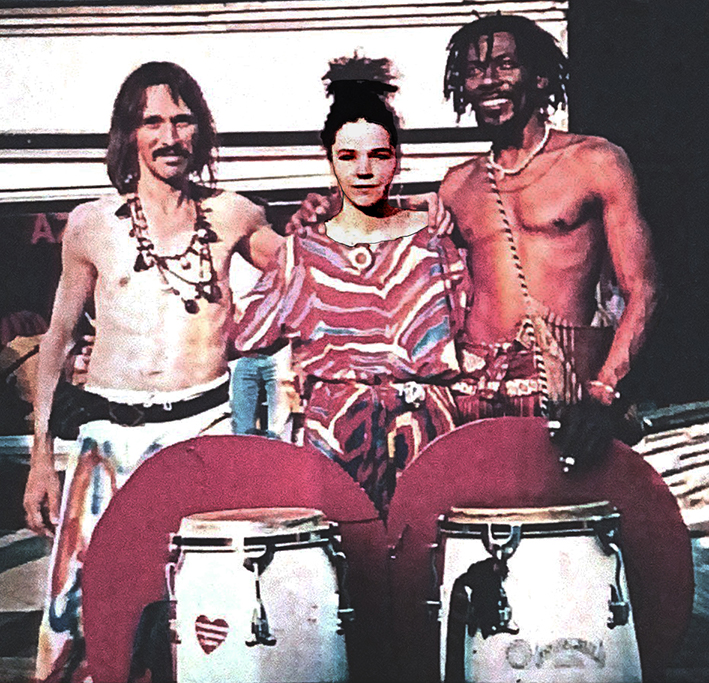Carnaval du Soleil
(1983 – 1990)
Carnival theme music

Carnaval du Soleil 83, rue St-Denis and its three founders, Julien Reiher, Louise Matte and Jacques Charbonneau.
After the first edition in ’83, Jacques Charbonneau, busy with his position as director of Copie-Art, withdrew from the organization and returned in ’84 as a performer in his multimedia project Arcane 12.
Julien Reiher will be a regular guest in other editions as a musician with his band UMOJHA.
Louise Matte will take on the role of director, designer and event coordinator, with a few appearances as musician.
Carnaval du soleil (1983-1990) was defined from the outset as a street arts festival, incorporating performances, installations, dance, sculpture and live painting, while keeping the musical section focused on World music, a field that received little media coverage in the 80s.
The aim over the years has been to boost the visibility of local bands by offering them a stage on which to express themselves. Few places in 1983 welcomed musicians from all over the world, apart from Carifête and Balattou.
As early as 1983, Les Foufounes électriques introduced the PDG collective (Pedneault, Desautels, Gaudreau) and the live painting phenomenon to Montreal. Subsequently, the Carnaval du soleil will invite PDG and his friends on numerous occasions. Over the years, traditional African dance, contemporary dance, pictorial performance on an overturned float, Jean Cocteau poetic installation, in vivo sculpture, etc… Transforming the street into a vast theater of creation was our vision.
At first, strollers discovered the Carnaval du soleil as they walked along. Subsequently, thanks to traditional media and community radio, the festival’s popularity grew, and people began to flock to see a good summer show populated by interesting unexpected acts.
In the early years of Carnaval du soleil, we’ll be able to count on community radio stations and newspapers to broadcast the event. Large-circulation newspapers (La Presse, Le Devoir, Journal de Montréal, the Gazette) would later take an interest. Private sponsors (Molson, Air Canada, Hydro-Québec) and public sponsors (federal and provincial ministries) will also be taking part.
The first, relatively modest Carnaval in 1983, was financed in part by the rental of artisan booths. Then we’ll have the support of public institutions through various employment programs, multiculturalism support, the Canada Council for the Arts, etc. Finally, the festival’s growing popularity will attract private sponsors.
